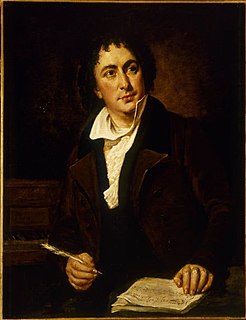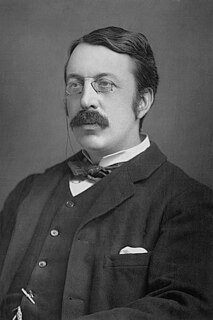Related Research Articles

Sonata, in music, literally means a piece played as opposed to a cantata, a piece sung. The term evolved through the history of music, designating a variety of forms until the Classical era, when it took on increasing importance. Sonata is a vague term, with varying meanings depending on the context and time period. By the early 19th century, it came to represent a principle of composing large-scale works. It was applied to most instrumental genres and regarded—alongside the fugue—as one of two fundamental methods of organizing, interpreting and analyzing concert music. Though the musical style of sonatas has changed since the Classical era, most 20th- and 21st-century sonatas still maintain the same structure.

Artur Schnabel was an Austrian-American classical pianist, composer and pedagogue. Schnabel was known for his intellectual seriousness as a musician, avoiding pure technical bravura. Among the 20th century's most respected and important pianists, his playing displayed marked vitality, profundity and spirituality in the Austro-German classics, particularly the works of Beethoven and Schubert.

The Piano Sonata No. 14 in C-sharp minor, marked Quasi una fantasia, Op. 27, No. 2, is a piano sonata by Ludwig van Beethoven. It was completed in 1801 and dedicated in 1802 to his pupil Countess Giulietta Guicciardi. The popular name Moonlight Sonata goes back to a critic's remark after Beethoven's death.
Robert Wilfred Levick Simpson was an English composer and long-serving BBC producer and broadcaster.

The six Cello Suites, BWV 1007-1012, are suites for unaccompanied cello by Johann Sebastian Bach. They are some of the most frequently performed and recognizable solo compositions ever written for cello. Bach most likely composed them during the period 1717–23, when he served as Kapellmeister in Köthen. The title given on the cover of the Anna Magdalena Bach manuscript was Suites à Violoncello Solo senza Basso.
Graeme Lloyd Murphy AO is an Australian dance choreographer. With his fellow dancer Janet Vernon, he guided Sydney Dance Company to become one of Australia's most successful and best-known dance companies.

The Piano Sonata in B minor, S.178, is a sonata for solo piano by Franz Liszt. It was completed in 1853 and published in 1854 with a dedication to Robert Schumann.
Carl Vine,, is an Australian composer of contemporary classical music. From 1975 he has worked as a freelance pianist and composer with a variety of theatre and dance companies, and ensembles. Vine's catalogue includes eight symphonies, twelve concertos, music for film, television and theatre, electronic music and numerous chamber works. Since 2000 he has been the Artistic Director of Musica Viva Australia. In 2005 he was awarded the Don Banks Music Award. In the 2014 Queen's Birthday Honours List, Vine was appointed as an Officer of the Order of Australia (AO), "for distinguished service to the performing arts as a composer, conductor, academic and artistic director, and to the support and mentoring of emerging performers."
Alban Berg's Piano Sonata, Op. 1, was published in 1910, but the exact date of composition is unknown; sources suggest that it was written in 1909. The Sonata is Berg's only piano work to which he gave an opus number.

Franz Schubert wrote his Sonata in C major for piano four-hands, D 812, in June 1824 during his second stay at the Esterházy estate in Zseliz. The extended work, in four movements, has a performance time of around 40 to 45 minutes. It was published as Grand Duo, Op. 140, in 1837, nine years after the composer's death.
Pierre Boulez composed three piano sonatas. The First Piano Sonata in 1946, a Second Piano Sonata in 1948, and a Third Piano Sonata was composed in 1955–57 with further elaborations up to at least 1963, though only two of its movements have been published.
Louis Calabro was an Italian American orchestral composer.
Franz Schubert's Piano Sonata in C major D. 840, nicknamed Reliquie upon its first publication in 1861 in the mistaken belief that it had been Schubert's last work, was written in April 1825, whilst the composer was also working on the A minor sonata, D. 845 in tandem. Schubert abandoned the C major sonata, and only the first two movements were fully completed, with the trio section of the third movement also written in full. The minuet section of the third movement is incomplete and contains unusual harmonic changes, which suggests it was there Schubert had become disillusioned and abandoned the movement and later the sonata. The final fourth movement is also incomplete, ending abruptly after 272 bars.
American avant-garde composer John Cage (1912–1992) started composing pieces for solo prepared piano around 1938–40. The majority of early works for this instrument were created to accompany dances by Cage's various collaborators, most frequently Merce Cunningham. In response to frequent criticisms of prepared piano, Cage cited numerous predecessors. In the liner notes for the very first recording of his most highly acclaimed work for prepared piano, Sonatas and Interludes, Cage wrote: "Composing for the prepared piano is not a criticism of the instrument. I'm only being practical." This article presents a complete list of Cage's works for prepared piano, with comments on each composition. All of Cage's indeterminate works for unspecified forces can also be performed on or with Prepared Piano.
Michael Kieran Harvey is an Australian pianist and composer whose career has been notable for its diversity and wide repertoire. He is renowned for commissioning, performing and composing new music. He has especially promoted the works of Australian composers, such as Carl Vine, most of whose piano music he has recorded and much of which was written for him. He is also particularly associated with the piano music of Olivier Messiaen.

The earliest western musical influences in Australia can be traced to two distinct sources: in the first settlements, the large body of convicts, soldiers and sailors who brought the traditional folk music of England, Wales, Scotland and Ireland; and the first free settlers, some of whom had been exposed to the European classical music tradition in their upbringing. An example of original music by a convict would be an 1861 tune dedicated to settler James Gordon by fiddler constable Alexander Laing. Very little music has survived from this early period, although there are samples of music originating from Sydney and Hobart that date back to the early 19th century. Musical publications from this period preserved in Australian libraries include works by Charles Edward Horsley, William Stanley, Isaac Nathan, Charles Sandys Packer, Frederick Augustus Packer, Carl Linger, Francis Hartwell Henslowe, Frederick Ellard, Raimund Pechotsch and Julius Siede.

The Sonata for two clarinets, FP 7, is a piece of chamber music composed by Francis Poulenc in 1918. Dedicated to Édouard Souberbielle, its total execution time is about six minutes. It is unusual among clarinet duets in that it is written for B♭ clarinet, which generally plays the melodic themes, and A clarinet, which plays a more supporting role through much of the piece. It is also unusual for music of this period that the clarinetists perform different time signatures simultaneously in parts of the opening movement.
From March 1816 to August 1817, Franz Schubert composed four violin sonatas. All four were published after the composer's death: the first three, D 384, 385 and 408, as Sonatinas in 1836, and the last one, D 574, as Duo in 1851. Schubert composed two more pieces for violin and piano, in October 1826 and December 1827 respectively: a Rondo, D 895, which was published during the composer's lifetime (Op. 70), and a Fantasy, D 934, which was premiered in January 1828, less than a year before the composer's death.
Eleanor Martin was a dancer who performed with the West Australian Ballet, the Australian Ballet Company, and the Australian Dance Theatre.

Charles Villiers Stanford's Violin Sonata No. 1 in D major, Op. 11, was composed in 1877, shortly after the composer completed his studies in Germany. It was one of his first pieces of chamber music, preceded only by his A major cello sonata. First performed the year it was composed, the sonata was published in 1878 by Ries & Erler in Germany, with a dedication to violinist Ludwig Straus.
References
- ↑ "Carl Vine : First Piano Sonata (1990) : New Sounds, Old Idols, and Extreme Pianism" (PDF). Kuimin.org. Retrieved 2013-09-21.
- ↑ Carl Vine (Composer) (2005-04-01). "Piano Sonata: Carl Vine: 9781844490332: Amazon.com: Books". Amazon.com. Retrieved 2013-09-21.
- ↑ "Piano Sonata : Music" (PDF). Cdn.australianmusiccentre.com.au. Archived from the original (PDF) on 2013-09-25. Retrieved 2013-09-21.
- ↑ Simon Wright. "Carl Vine - Australian recordings". Move.com.au. Retrieved 2013-09-21.